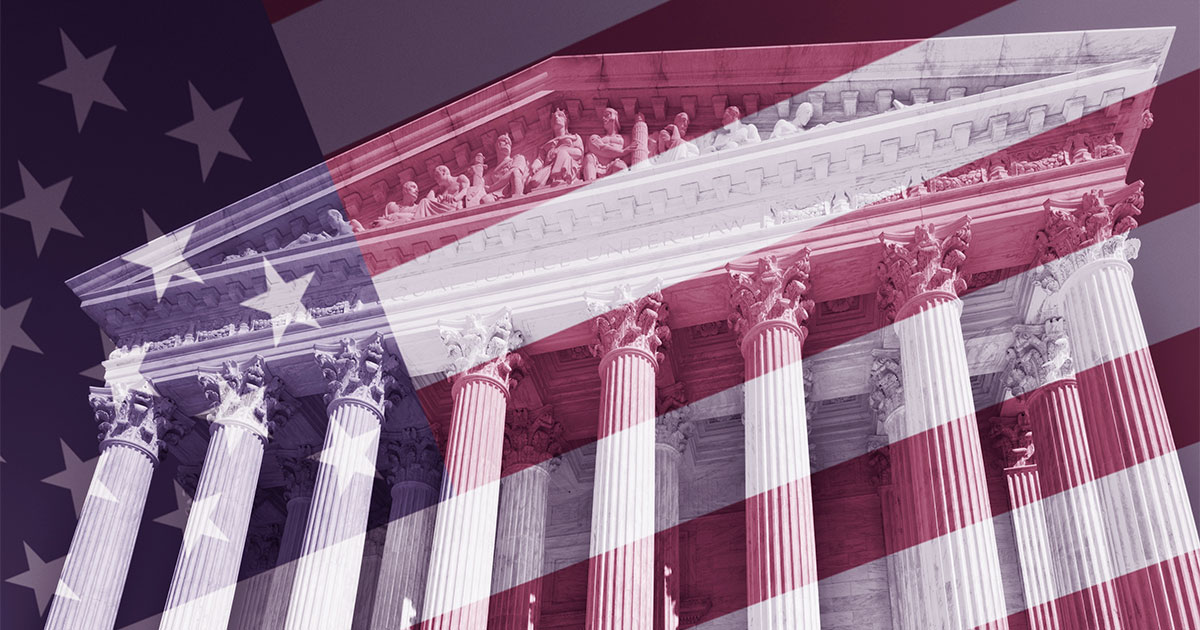
On Monday, May 2, 2022, the political journalism group Politico
published and reported on a leaked U.S. Supreme Court draft-opinion.
The draft opinion related to a pending case, addressing
Roe v. Wade, which led to a firestorm of responses on everything from abortion, to birth control, to privacy. The authenticity of the "draft" was confirmed by the Court the next day. The Court has now launched an internal investigation into the leak.
Aside from the merit and expected final decision (expected in the coming days), the leak itself begs a procedural question: was the leak intentional, and by whom?
Appellate practitioners Nick Zales and Jacques Condon debate "intentionality" – and leave it up to you to draw your conclusions on 'whodunit'.
An Intentional Leak? A Debate
JACQUES CONDON: Thanks for participating in the debate, Nick. My initial question is this: Was the Supreme Court leak intentional? When I first heard the story, my initial guess was, no, it was accidental. There were no dissents attached. The "leaked" document was still just in draft (actually labeled “1st DRAFT” with a “NOTICE” that it is subject to formal revision). And an intentional leak would suggest disloyalty by clerks or staff.
 Jacques C. Condon, Marquette 1999, is owner of
Condon Law Firm, LLC, in Thiensville, handling civil litigation, business law, and problem-solving cases.
Jacques C. Condon, Marquette 1999, is owner of
Condon Law Firm, LLC, in Thiensville, handling civil litigation, business law, and problem-solving cases.
 Nicholas Zales, Marquette 1989, is a sole practitioner and appellate attorney with Zales Law Office, Milwaukee.
Nicholas Zales, Marquette 1989, is a sole practitioner and appellate attorney with Zales Law Office, Milwaukee.
In my experience, clerks are extremely loyal to their judge – as are the staff. Could staff have drafted an email intended for another justice that made its way to a reporter? Could a draft have been misplaced? Could a 98-page draft have been intended for shredding, only to find its way into the garbage can? I find all plausible, particularly on an early-draft. So, I initially guessed the leak was probably unintentional – but this may be more hopeful than actual, and I can be persuaded otherwise.
NICHOLAS ZALES: Thank you, Jacques. I disagree. There is no way the leak of Justice Samuel Alito's draft opinion in
Dobbs v. Jackson Women's Health Organization, which would overturn
Roe v. Wade, was an accident or oversight. It was intentional. The Court likely has an internal and external email systems. I am going to assume the justices share drafts of opinions using this system, or at least through a closed system. Politico would have needed to obtain a draft outside that closed system. All it takes is an email.
CONDON: Nick, I understand your point – even reports about the reported leak (i.e., sounds like a few levels of hearsay, or speculation) stated it was unclear whether the draft was obtained electronically or by hard copy. My guess: it was a hard copy. The draft opinion appeared to be "stamped" for circulation. Back in my day, as a clerk, the same thing would happen with 7th Circuit slip opinions. The opinions were stamped – which was either an actual stamp, notary-style, or a sticky note with names – and then checked when reviewed. So rather than, say, a digital copy for editing, the opinions were snail-mailed around chambers and sometimes between chambers.
This makes sense in the Supreme Court setting; justices can see other draft opinions and then write their concurrence, dissent, and decide to join in the reasoning of the others. They would then circulate their writings via snail-mail, allowing further revisions of the "draft" by the author, and securing enough votes for a majority decision.
And the "stamp" on Justice Alito's draft seems photo-copied. This suggests neither a hack nor an editing issue – unlikely an "accidentally forwarded" email. I don't know about internal/external email at the courts, but I did recognize a "stamp" copy. What do you think?
ZALES: So if it was a photo-copy version, it may have been removed from the Court and physically handed to someone at Politico?
CONDON: Exactly. There is no “check mark” on the stamp – it very well could have left Justice Alito’s chambers, been formatted and copied for routing, and then wound up in the hands of the “leaker.” It would make it difficult to know whodunit, as it were.
ZALES: It makes me question “whodunnit.” According to the Court’s past law clerks, about 75 permanent and law clerk staff would have access to a draft opinion. The Court has a policy of confidentiality and loyalty, but the list of possible leakers is almost endless. Apparently the Marshal’s investigation into the leak is seeking clerk cell-phones, some of whom have debated retaining counsel.
CONDON: Interesting, because Politico stated it received a copy of the draft opinion “from a person familiar with the Court's proceedings.” That seems an odd reference. Almost as if they obtained the copy, perhaps from some dubious source, then confirmed the copy was accurate through others (think expert-opinion based on “knowledge and experience”).
ZALES: Think about motivation. The justices probably didn’t have an incentive to leak the document, particularly at such an early stage. Meaning, the justices have an Article II “good Behaviour” [accurate spelling] appointment, the case was still being decided, and the justices themselves were in the process of review and writing; I assume the draft opinion had at least a five-person majority-support after oral argument.
CONDON: Note timing. The case was argued Dec. 1, 2021, with the leaked draft stamped for circulation on Feb. 10, 2022, yet the draft did not appear until the May 2 story. Was there a second or third draft circulated? Where were the dissents? That’s a big time-gap. And the same reporters that leaked the opinion were involved in other articles about Justice Breyer’s departure and the confirmation process involving his replacement at the end of the term. There was a lot of activity in that February to May time frame.
ZALES: What makes this interesting is you think about the power of eFiling, and email. It represents the danger of including clients on emails, like a cc-line, or even failing to properly save a document for eFiling. The practitioner needs to make sure they attach the correct document. Who do you think is responsible for the leak?
CONDON: I eliminate the justices themselves – and we will likely never know. According to a
separate
Politico story, there is some precedent for leaks, albeit rare, with one leak related to
Roe itself. Apparently in 1972, before ordering a second round of argument in
Roe, annonymous sources reported about internal wrangling within the Court. Then in 1979, the Supreme Court launched an inquiry into reports about decision outcomes that were a days away from release. According to the
Politico story, a government printing office employee involved in setting type for the Court's ruling was transferred to a different division, but the staffer denied leaking information.
So there is some rare-precedent for "leakage". Perhaps it is a wonder that leaks don't happen more often.
ZALES: Which is another reason that supports an intentional leak. Maybe it was to create news, or perhaps sway particular justices. Maybe it was to undermine the Supreme Court. Maybe the firestorm response had the opposite impact, galvanizing positions. I don’t know, but I do think the rarity of a leak and the subject matter of
Roe support an intentional leak.
CONDON: Nick, whether you persuaded me or I did it to myself, and as much as I would hope otherwise, I’m going to change my opinion, sort-of: the leak was “most-likely” intentional. My guess is the printing office will again be blamed, as in 1979. Who do you think “dunnit”?
ZALES: While there are many arguments that a leaning-justice could be behind the matter, that seems odd given the opinion’s verbiage. There are even shady references to jurists with dubious pasts – such as Sir Matthew Hale. I also understand that, since being leaked, the opinion itself has been cite-checked, fact-checked, and in large measure, drawing its own row beyond
Roe (pun intended).
CONDON: We await the final decision – and the speculation attendant to it. Thanks for the debate.
ZALES: No problem. Another teaching for others on how not to practice law and be careful in appellate court filings.
Note: Watch this blog for more after the decision is released.
This article was originally published on the State Bar of Wisconsin’s
Appellate Practice Section Blog, Sua Sponte. Visit the State Bar
sections webpage or the
Appellate Practice Section webpages to learn more about the benefits of section membership.
